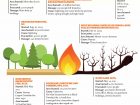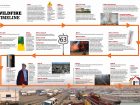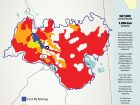
From the Editor: July 2016
Laura King
Features Hot Topics OpinionI was in Alberta the week wildfire decimated parts of Fort McMurray. A handful of firefighters and officers who were supposed to be at the Northern HEAT conference in Peace River had been dispatched to Fort Mac, packing pick-up trucks and answering the call.
Their stories are similar, and remarkable: lack of food and sleep; less-than-perfect command, control and communication.
Which, some argue, was reasonable given the magnitude of the Fort Mac fire and therefore, the response, the number of agencies involved, and the remote and challenging location – one highway in and out.
But given High Level, High River, Slave Lake, Elliot Lake, Lac-Megantic and L’Isle-Verte, the need for broader planning seems crucial and obvious, yet little has changed. As one chief so eloquently put it in conversation this week, lessons from these incidents have been observed, but clearly not learned – the same issues emerging repeatedly in the absence of planned provincial or national responses.
“Nobody really had a great handle on how many firefighters were here [early on], or the resources,” a deputy chief told me over the phone from Fort Mac. “The command structure definitely needed to be formalized.”
While there’s no doubt that those who deployed were needed, the lack of infrastructure (hotels, restaurants) due to the evacuation left firefighters scrambling for food and shelter, just as Can-TF3/HUSAR team members did in Elliot Lake in 2012.
Given Alberta’s experience with wildfire in Slave Lake in 2011 and floods in Calgary and High River in 2013, the expertise of chiefs such as Jamie Coutts and Brian Cornforth, the after-action reports, recommendations, and the well-known science that points to optimum wildfire conditions in May, the lack of preparedness was, to my mind, appalling.
Some examples: much of the community was being FireSmarted after the fire; portable kitchens and showers arrived . . . eventually; personnel in the REOC wore respirators for three days until a filtration unit was hooked up to get the smoke out of the building; municipal firefighters and officers lacked an understanding of wildfire behaviour and the role of wildland firefighters. All could have been mitigated with proper planning, co-ordination and co-operation.
Indeed, as Calgary Deputy Chief Allan Ball said in a brief interview from Fort McMurray, had the incident been in Edmonton, for example, things would have happened more quickly. Which is true, but also the point: massive wildfires tend to burn in northern Alberta. It was never a question of if, but when, a fire bigger than Slave Lake, which threatened more homes and people, would strike.
Our contributors – Slave Lake Chief Jamie Coutts; Cody Zebedee, a volunteer in High River and career captain in Foothills; Chris Fuz Schwab, deputy chief in Smoky Lake; and Dan Verdun, deputy chief with the County of Grande Prairie – wrote compelling stories about their experiences.
Like every other firefighter in Alberta, all four wanted to be in Fort Mac; however, it’s reasonable to conclude that none of them anticipated the conditions, and it’s likely that only Coutts fully understood at the onset the magnitude of the beast. They, like so many, answered the call.
No one died fighting fire in Fort McMurray – although there were close calls.
Only better planning – regional (or provincial) mutual aid similar to that developed by chiefs in northern Alberta in the absence of a government initiative; more structural-protection teams; better understanding by municipal firefighters of weather and wind patterns; full-on FireSmart implementation; an accurate provincial resources list; and a standard incident management system – will ensure no one dies the next time.
Print this page


